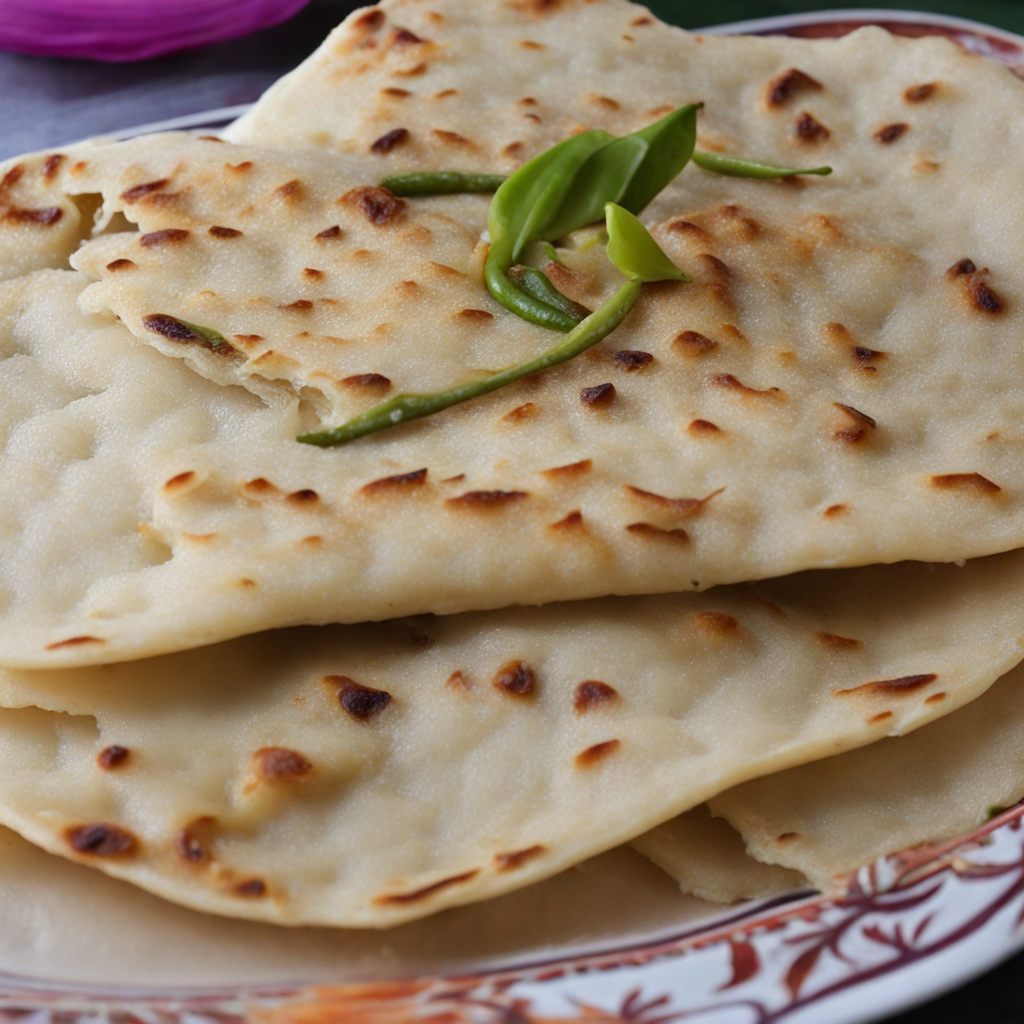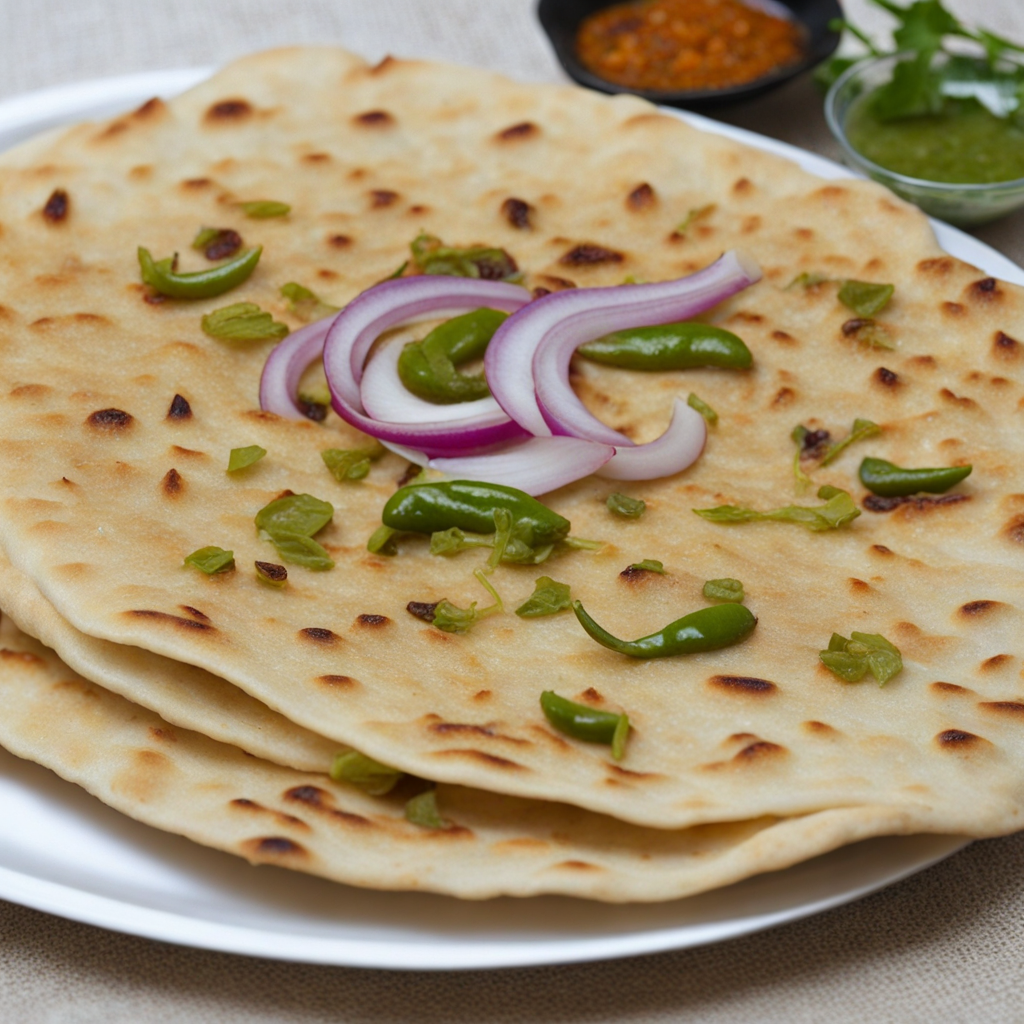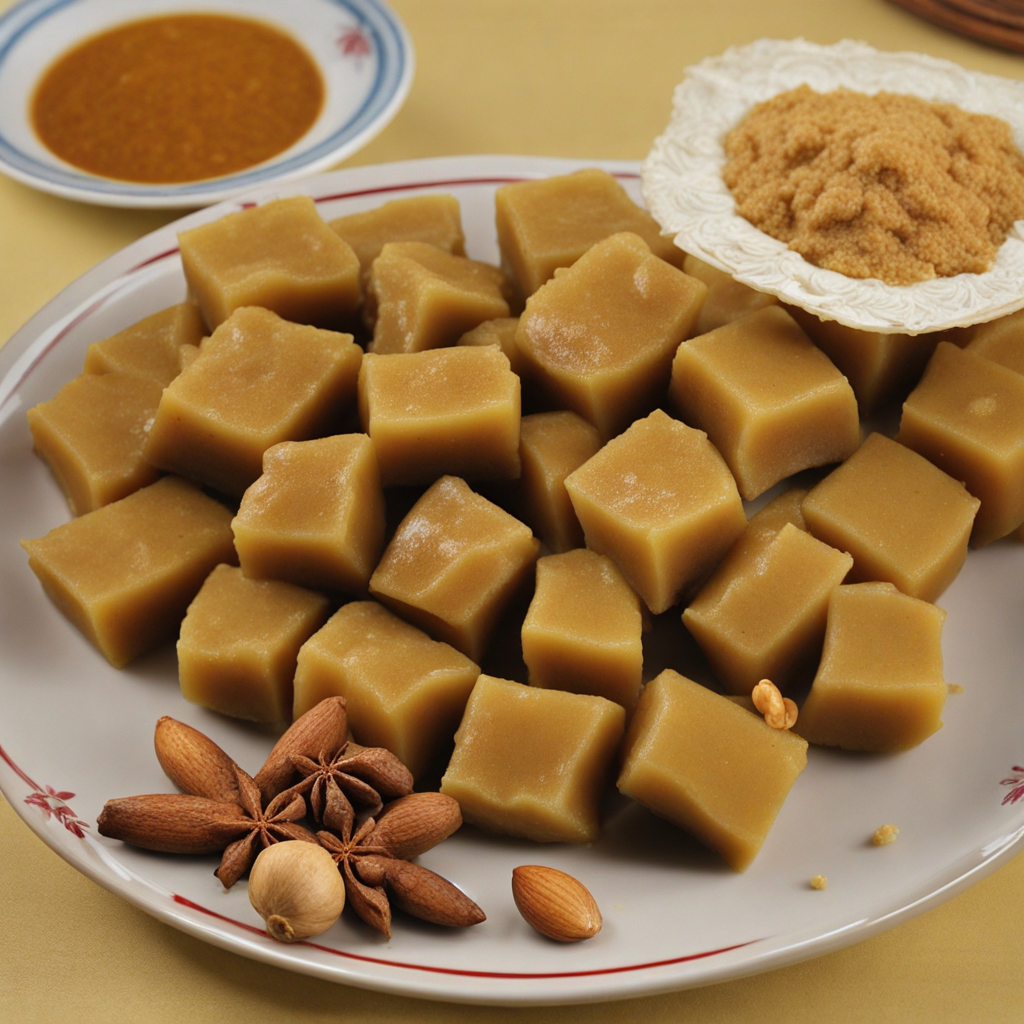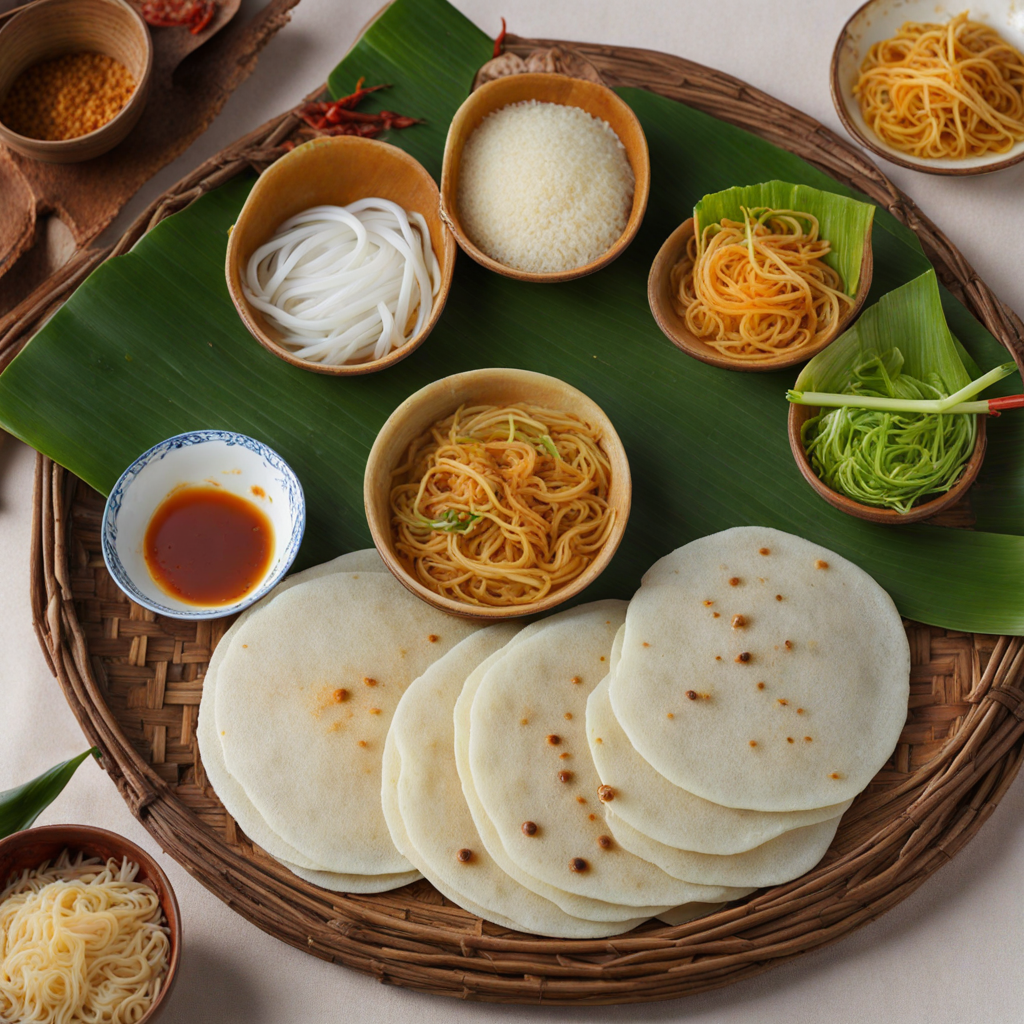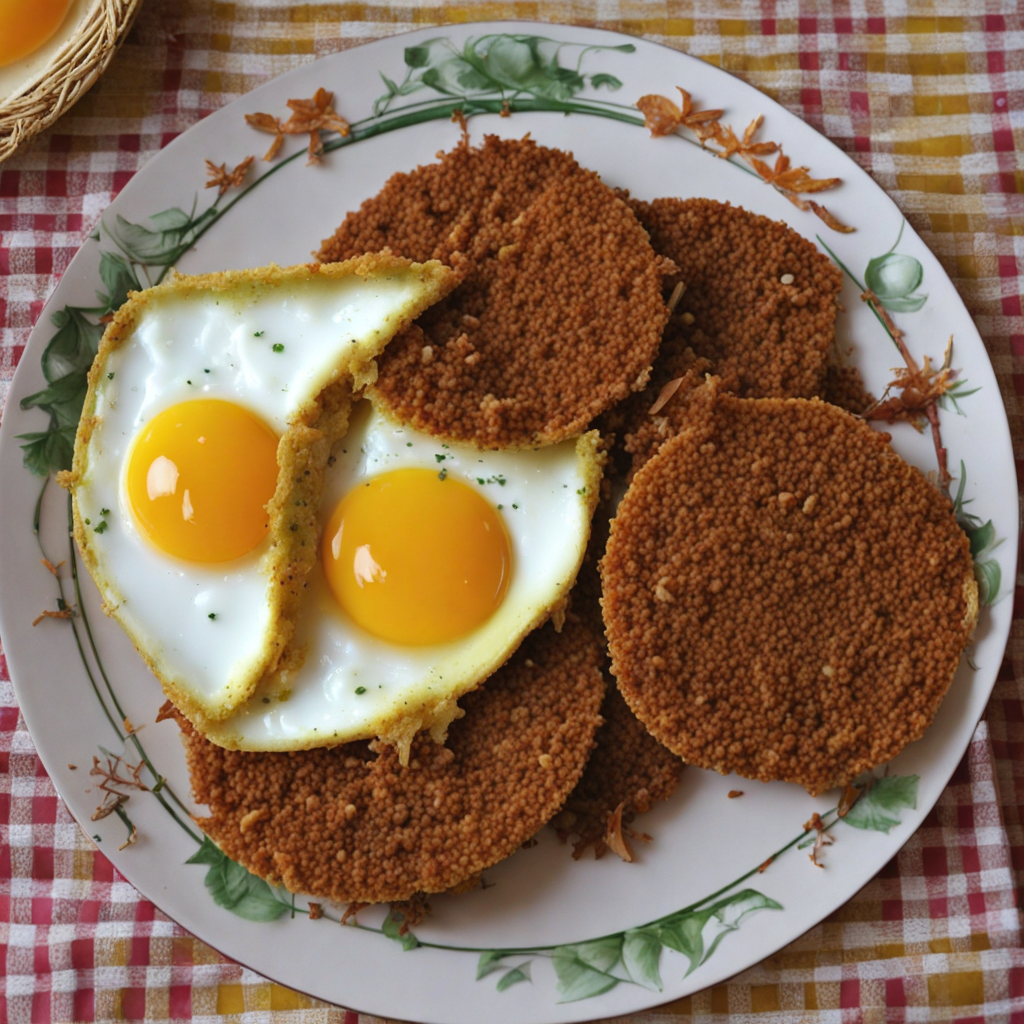Pol Roti
Pol Roti is a delightful Sri Lankan flatbread that captures the essence of the island's culinary traditions. Made primarily from wheat flour, the dough is enriched with freshly grated coconut, which infuses a subtle sweetness and a unique texture. The addition of salt enhances the flavor, making it a versatile accompaniment to a variety of dishes. Typically cooked on a hot griddle, the roti develops a golden-brown crust while remaining soft and chewy on the inside, offering a satisfying bite that perfectly complements its toppings and sides. Traditionally enjoyed for breakfast or as a snack, Pol Roti can be served with an array of savory accompaniments. It pairs beautifully with spicy sambols, such as coconut sambol, made from ground coconut, red chili, and lime juice, which adds a fiery kick. Additionally, it can be complemented with curries, such as dhal or vegetable curry, allowing the roti to absorb the rich flavors and spices of the dish. The combination of textures and flavors creates a harmonious balance that is characteristic of Sri Lankan cuisine. For those looking to explore new tastes, Pol Roti offers a delightful experience that is both comforting and satisfying. Its simplicity allows the natural sweetness of coconut to shine through, while its adaptability makes it a canvas for a variety of toppings and flavors. Whether enjoyed plain, with a sprinkle of sugar, or paired with bold, spicy dishes, Pol Roti is a must-try for anyone eager to discover the rich culinary heritage of Sri Lanka.
How It Became This Dish
The Fascinating History of Pol Roti: Sri Lanka’s Coconut Flatbread #### Origins and Cultural Roots Pol roti, a traditional Sri Lankan flatbread, is a delightful culinary staple that has woven itself into the fabric of the island's culture. The name "pol roti" translates to "coconut bread," which is fitting considering that the primary ingredient is freshly grated coconut, a fundamental component of Sri Lankan cuisine. The roots of pol roti can be traced back to the island’s agrarian past, where coconuts have long been cultivated along the coastal regions. The coconut tree, often dubbed the "tree of life," has historically provided food, shelter, and materials for the people of Sri Lanka, making it a cornerstone of their agricultural and culinary practices. Pol roti is believed to have emerged during the early periods of Sri Lankan civilization, which dates back over 2,500 years. As rice and flour became staples in the local diet, the integration of coconut into various dishes became increasingly common. The popularity of pol roti grew in the rural communities, where it served as a practical food source that was easy to prepare and could be enjoyed with various accompaniments. #### Ingredients and Preparation The basic ingredients of pol roti are simple yet rich in flavor. The dough is made from flour (usually wheat flour), salt, water, and freshly grated coconut. The coconuts are often harvested locally and grated just prior to use to ensure freshness and flavor. In some variations, spices such as chili powder or onions may be added to enhance the taste, reflecting the regional diversity and personal preferences of different households. Preparation of pol roti is an artisanal process that showcases the skill of the cook. The dough is kneaded until it reaches a smooth consistency, then formed into round, flat discs. Traditionally, these discs are cooked on a flat griddle called a "tawa," which allows the roti to develop a crispy exterior while remaining soft and chewy inside. The cooking method may vary slightly based on regional practices, but the fundamental technique has remained consistent over time. #### Cultural Significance Pol roti holds a special place in the hearts of Sri Lankans, transcending its role as mere sustenance. It is often associated with communal meals, family gatherings, and festive occasions. The act of sharing pol roti with loved ones embodies the spirit of hospitality that is deeply ingrained in Sri Lankan culture. Often served with a variety of accompaniments like spicy sambol, curries, or even sweetened with jaggery, pol roti is versatile enough to cater to both savory and sweet preferences. In rural communities, pol roti is often enjoyed as a breakfast item, providing a hearty start to the day. Its simplicity and nutritional value make it a favored choice among farmers and laborers who require sustained energy for their daily activities. The flatbread has also become a popular street food, with vendors serving it alongside a range of flavorful side dishes, attracting both locals and tourists alike. #### Development Over Time As Sri Lanka has evolved, so too has pol roti. The colonial era introduced new culinary influences, with the Portuguese, Dutch, and British bringing their own flavors and techniques to the island. This mixing of cultures resulted in the incorporation of different ingredients and cooking methods into the traditional preparation of pol roti. For instance, the introduction of various spices and condiments enriched the flavor profile of the accompanying dishes, creating a more diverse culinary experience. In modern times, pol roti has gained international recognition, thanks in part to the global diaspora of Sri Lankans. As families migrated abroad, they carried their culinary traditions with them, introducing pol roti to a wider audience. In many cities around the world, Sri Lankan restaurants have embraced pol roti as a signature dish, celebrating its authenticity while also experimenting with innovative presentations and pairings. The rise of food tourism in Sri Lanka has also contributed to the bread's popularity. Visitors to the island are often eager to experience local flavors, and pol roti has become a must-try item on many food itineraries. Cooking classes, food festivals, and culinary tours often highlight pol roti, showcasing not just the dish itself but also the cultural stories that accompany it. #### Contemporary Variations In contemporary Sri Lankan cuisine, pol roti has continued to adapt and evolve. While the traditional version remains beloved, innovative chefs and home cooks alike have begun experimenting with alternative flours, such as gluten-free options, catering to dietary restrictions and preferences. Additionally, flavors have been diversified with the inclusion of herbs, vegetables, and even cheese, creating fusion variations that appeal to a broader audience. The rise of social media has also played a significant role in the resurgence of interest in traditional foods like pol roti. Food bloggers and influencers share visually appealing images and recipes, encouraging younger generations to connect with their culinary heritage. This renewed interest has sparked a revival of traditional cooking methods and an appreciation for the artisanal craftsmanship involved in making pol roti. #### Conclusion Pol roti stands as a testament to Sri Lanka’s rich culinary heritage, embodying the island's agricultural resources, cultural traditions, and the spirit of community. From its humble origins as a daily sustenance for rural families to its contemporary status as a cherished dish enjoyed by people around the world, pol roti has evolved while remaining deeply rooted in Sri Lankan identity. As it continues to be celebrated both at home and abroad, pol roti serves not only as a delicious flatbread but also as a symbol of resilience, adaptability, and the enduring connection between food and culture. Whether enjoyed at a bustling street stall, a family gathering, or a fine dining establishment, pol roti remains a beloved culinary treasure that invites all to partake in the warmth and hospitality of Sri Lankan life.
You may like
Discover local flavors from Sri Lanka


